RANKED CHOICE VOTING WORKS.
VOTE YES ON 6 IN BURLINGTON
THIS TOWN MEETING DAY
Ranked Choice Voting is already giving Burlington voters a better ballot for city council races. It's time for a better ballot for mayoral and other elections too.
The way we vote limits our choices for leaders and fails to hold them accountable to the communities they represent.
The best ideas should decide who wins, not the biggest bank accounts or outdated electoral rules.
We need a way to elect candidates who represent the will of the people.
That’s where Ranked Choice Voting comes in.
Ranked choice voting allows voters to rank candidates in order of preference: one, two, three, and so on. If your vote cannot help your top choice win, your vote counts for your next choice. This process continues until there is a majority winner — a candidate who wins at least 50% plus one of the votes.
This simple change makes our democracy more fair and functional.
Some Burlington voters got to use Ranked Choice Voting in the December 2022 special election for city council.
See what they had to say about RCV…

What’s happening in Burlington?
Burlington voters can make democracy more fair and functional by voting YES on Question 6 to expand Ranked Choice Voting on their Town Meeting Day ballot - a charter change question asking voters to adopt ranked choice voting for the election of mayor, school commissioners, and ward election officers.
You can read the official copy of this charter change language, listed fourth on the City Clerk's Website.
What does this do?
Right now, City Councilors are already being elected by Ranked Choice Voting, and it makes sense that other city offices be treated the same.
If any candidate for city council (and hopefully candidates for mayor and other elections too!) receive more than 50% of first choice votes, they are declared the winner
If no single candidate receives a majority of first choice votes, the lowest vote-getter is eliminated and the voters that picked that candidate as their first choice will have their second-choice votes count.
This process continues until there is a majority winner with over 50% of the vote, thus electing officials with support from a majority of voters.
How is this different?
Currently, a mayor and school commissioner candidate only needs the highest number of voters, amounting to at least 40% of all votes cast, to be declared the winner. This means the candidates for mayor and school commissioners can be elected without the support of a majority of voters.
Right now, if no single mayoral or school commissioner wins above 40% of the vote, a runoff election is held. These runoffs create additional cost and delay, and result in much lower voter turnout. Ranked choice voting prevents all of these issues and upholds the majority support.

Benefits
Elect Majority Winners
Ranked choice voting elects majority winners even when more than two candidates run for office, which protects democracy and more better reflects will of the voters. Under existing law, a “winner” might actually be the candidate the majority of the voters consider to be the worst choice. Ranked choice voting ensures majority rule, rather than simply allowing the candidate with the highest vote total in a multi-candidate race to win.
Eliminate the Spoiler Effect
Ranked choice voting eliminates the spoiler-candidate effect and the need for strategic voting. Unlike our current electoral process of plurality rule, voters do not feel pressured to strategically select frontrunner candidates or risk their votes being wasted. With ranked choice voting, voters can select their favorite candidate, even if they seem unlikely to win. If their first choice is eliminated, voters still get a say in who governs them. Voters are free to vote on principle instead of strategy; voting FOR their preferred candidates instead of AGAINST their least preferable candidate, regardless of how others may vote.
Elect Diverse Candidates
Ranked choice voting promotes more diverse candidates and winners. Because candidates are not discouraged from running at the risk of being a “spoiler”, ranked choice voting is a system that invites greater participation from more diverse candidates. Recent studies have found that ranked choice voting increases the percentage of BIPOC and female candidates seeking office, and that the victors of these elections tend to better reflect their constituency, resulting in these underrepresented populations winning more offices.
Discourage Negative Campaigning
Ranked choice voting discourages negative campaigning and rewards candidates who build consensus and broad appeal. Because candidates are also competing for voters’ second-choice votes, often from opponents’ supporters, the incentives for highly negative campaigning and personal attacks are reduced. Candidates are encouraged to reach out to voters beyond their typical base.
Increase Participation & Save Money
Ranked choice voting increases voter participation and saves taxpayer money. For example, under current law in Burlington, if the plurality winner of an election does not receive at least 40% of the vote, a runoff election is held. Runoff elections require all of the costs and burdens of a separate election, but voter participation is usually much lower and of course, the results of the election come much later. Ranked choice voting prevents all of these issues.


